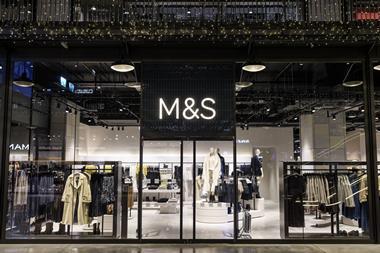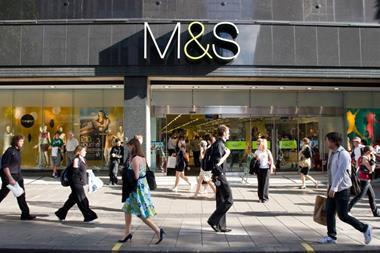In recession, it might be expected that an increasing number of retailers would turn to private label to ease their burdens. But what are shoppers’ perceptions of such ranges, asks John Ryan
These are difficult times and retailers must be wondering which way to go with their offers. And perhaps the first and most obvious avenue they are likely to follow is price.
The logic goes that if trade is tricky, a few markdowns or perhaps the offer of a reduction at the till will provide the impetus to galvanise shoppers into action. The trouble with that approach is that if every merchant does it shoppers certainly win, but the only thing in it for the retailer is reduced margin.
A second approach might be to increase the amount of private label on the shelves. Managed properly, this carries with it the tantalising possibility of preserving margins, while offering lower prices to the customer. Perfect. Except that somewhere along the line, the power of the brand can be sacrificed and the outcome may well be ranges that nobody actually wants.
So what is to be done? On the most simple reckoning, there are two types of retail offer, branded or own-buy, and it is the balance between the two that will determine how shoppers view the total offer. But things are not as simple as this analysis suggests.
Guy Douglas, managing director at Cheltenham-based branding agency FLB Design, observes that own-buy stock divides between that which might previously have been considered private label and what are, in effect, brands owned by retailers. In food retailing, brands such as Sainsbury’s Taste the Difference or Tesco’s Finest stand as evidence of the success that supermarkets have enjoyed through following this path.
Douglas says that during the last big recession, in the early 1990s, private-label merchandise that possesses many of the attributes of a standalone brand did not exist, but that has changed. “Today, they’re seen by consumers as much more credible alternatives and part of that is about the [private label] brand actually reflecting the retail brand, in terms of tone of voice,” he adds.
As well as the trust that shoppers are prepared to invest in the better end of own-brand, price is also a consideration. Rune Gustafson, UK chief executive of consultancy Interbrand, says: “Certain private labels, particularly in food, are actually more expensive than the branded alternatives, but you know you’re buying quality. Quite a lot of new product innovation has gone into the production of own-brands.”
Interbrand recently published a survey entitled The Best Retail Brands in which it states that H&M, Carrefour, Ikea, Tesco and Zara are, in that order, Europe’s top retail brands.
Take the grocers out of the list and you are left with what might be termed monobrands – retailers that trade without the benefit of externally branded goods. But while this is true, it can equally be argued that, for example, Divided, the younger-fashion private label at H&M, or the Kate Moss range from Topshop, both look and behave as brands in-store.
However, Gustafson has reservations and says that for a brand to be effective at any point in the economic cycle, recessionary or otherwise, it has to operate beyond the store.
“A lot of retailers see the retail environment as the be-all and end-all. But of course, there are a lot of non-store touch points,” he says. “For an own-label to become a brand it has to be about quite a lot more than price. Own-label is about offering shoppers real choice.”
Gustafson cites Marks & Spencer’s Per Una as an example of a brand that operates as more than a private label and one that has always invited the question of whether it would thrive as a standalone branded proposition.
The example of Per Una illustrates how the case of own-label vs branded goods has become clouded by slickly marketed own-brands that are probably afforded the same level of care and attention as products that emanate from brand owners. Rather than price and margin –although both remain important – the most relevant question for retailers considering the branded/own-brand equation is: what does a true brand do for a retail business in a recession?
Speak to any of the big brand owners and trust is a recurring theme. Unilever UK and Ireland chairman Dave Lewis says that a brand’s equity remains its strongest point and ensures that when times are tough, shoppers will not always decamp to the lowest-price alternative.
He uses own-label washing powder as an example. According to Lewis, sales of the commodity have remained more or less constant over the past 18 months – a fact that would seem to contradict the view that the lowest price will always win.
He asks: “Why haven’t sales of own-label washing powder gone up? Because people don’t want to get it wrong. They think: ‘If I wash it and it’s not clean, I can’t afford to get it wrong.’ People will trade down, but only to a level.”
Gustafson agrees. “Of course budgets are tight and of course people will trade down on certain products, but only if what they are buying is deemed to be of acceptable quality,” he says. “We actually go back to brands we trust in uncertain times. Of course, some brands disappear, but strong brands get stronger.”
Lewis highlights the other dilemma that retailers face, whether in food or fashion – that the tendency for shoppers to trade down is dependent on the commodity being sold.
Even at the most basic level, therefore, the choices facing retailers when considering the own-brand/branded product mix are complex. There would appear to be value-led private labels towards which shoppers will gravitate by virtue of price. But with the exception of the discounters, they will not necessarily be the automatic choice for shoppers.
Many retailers have spent almost as much time creating own-brands as brand owners have and while marketing budgets will be lower for private label, the risk involved in creating and maintaining an in-house labelmay lead to more markdowns and compromised margins.
There is also the question of when a private label becomes, to all intents and purposes, a brand in its own right. Interbrand global chief executive Jez Frampton says: “Retailers are perfectly placed to build great brands. They have many rich data points.” Among these he lists service, process, product mix, layout, ambience and human interaction.
At this point it would appear that the only constant in all of this is that true private label equates to rock-bottom pricing and is generally confined to bargain-hunters. Anything beyond this, branded or added-value own-brand, seeks to reach out to shoppers with more than just price.
As the recession continues it would appear that there is less clarity surrounding the private label/branded debate than ever. And the confusion about when a brand really is a brand extends across the whole of the sector, whether it concerns frocks or fishfingers.
Sainsbury’s quality first
Sainsbury’s unveiled a robust set of figures last week with like-for-like sales up 6.2 per cent, excluding petrol, indicating that a lot of what it is doing chimes with the times and its shoppers.
As a food retailer it covers all the bases with its Basics private-label value range having been rapidly expanded over the past 12 months and now totalling more than 600 products. While this might be seen as a desire to tackle competitors such as Aldi and Lidl – and it probably is, in common with all other major supermarkets – Sainsbury’s offers an aspirational range with its Taste the Difference own-brand. A Sainsbury’s spokesman says that this is part of a private label good, better, best policy, “enabling Sainsbury’s to offer something to all shoppers, regardless of their budget”. Overall, the quantity of private label on offer continues to increase at Sainsbury’s.
The spokesman says that there is more to supermarket own-buy than just putting on a label that is specific to a particular retailer. “Brand integrity is key – supermarkets often lead the way, for example in the removal of hydrogenated fats, lowering salt, multiple traffic light labelling on our own-brand food items,” he says. “As a retailer with face-to-face contact with the people buying products from our shelves, we have a good insight into what is important to them.” He adds that branded goods, which make up about 50 per cent of Sainsbury’s total offer, are always sold alongside private label, “allowing shoppers to make an informed choice”.
The spokesman also stresses that an own-brand strategy needs a marketing boost to make it work. Last September, Sainsbury’s launched its Switch and Save campaign, urging shoppers to buy own-brand, by dint of the potential for saving on the weekly shopping bill. There has also been a renewed focus on the core Sainsbury’s range, which the spokesman says has been going longer than most global brands. If Sainsbury’s is typical, therefore, private label is certainly on the increase, but it is not necessarily price-driven, often having rather more to do with perceived demand for quality and reliability.
The own-label stance taken by Sainsbury’s and others like it involves shoppers allowing retailers to act as product editors, according to Interbrand UK chief executive Rune Gustafson. The inference is that grocers’ own-label is, in many cases, a matter of shoppers giving retailers permission to source good products on their behalf, instead of buying the default brand.
ASOS the branded and private-label experience online
Asos director of marketing Hash Ladha says that private label has always been central to the fashion e-tailer’s offer. “With us, it’s always been a case of starting off with own-buy,” he says. “With womenswear, it’s always been own-brand first and then branded. It’s the other way around for men.” About 60 per cent of the Asos womenswear offer is own-buy, while the figure is just 30 per cent for men.
The proportion of Asos’s offer that is own-brand has not varied and, as Ladha points out, the restrictions on space that characterise high street retailing are not a problem for an online retailer.
Ladha says that Asos works with brands to market stock online. “It’s their brand and if they want it to be promoted in a particular way, then that’s what we tend to do. And some brands operate shop-in-shops,” he says. He adds that Asos does this so that, just as might be the case in a department store, “shoppers get the full brand experience”.


























No comments yet